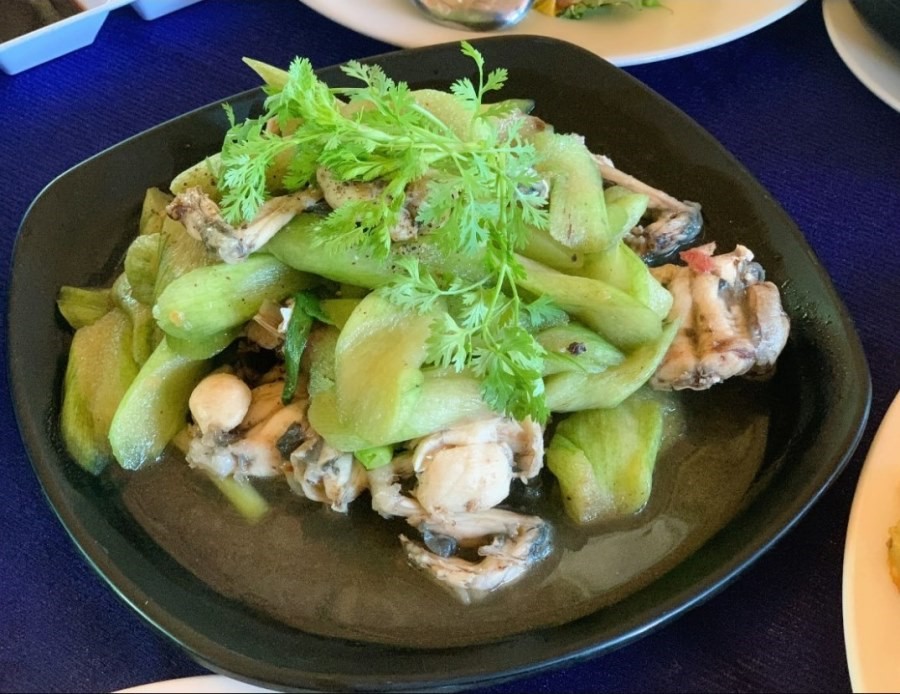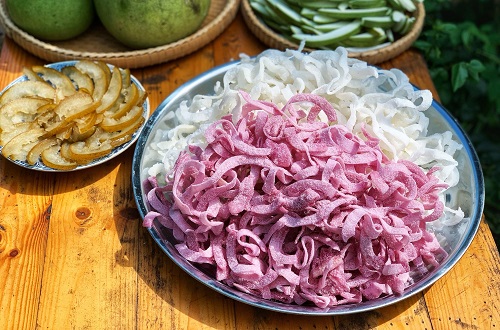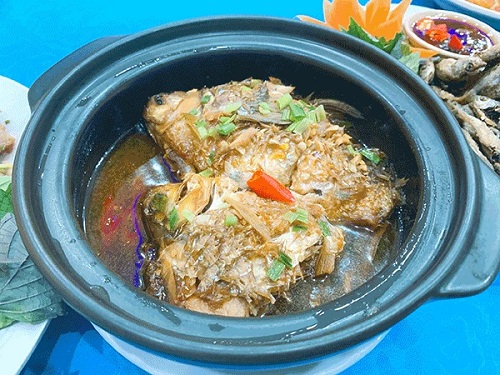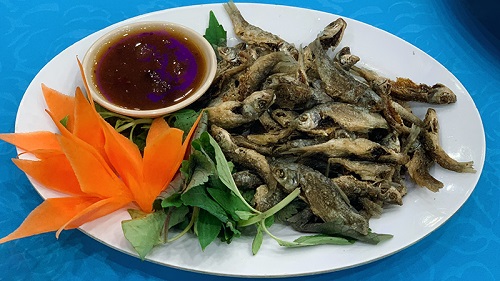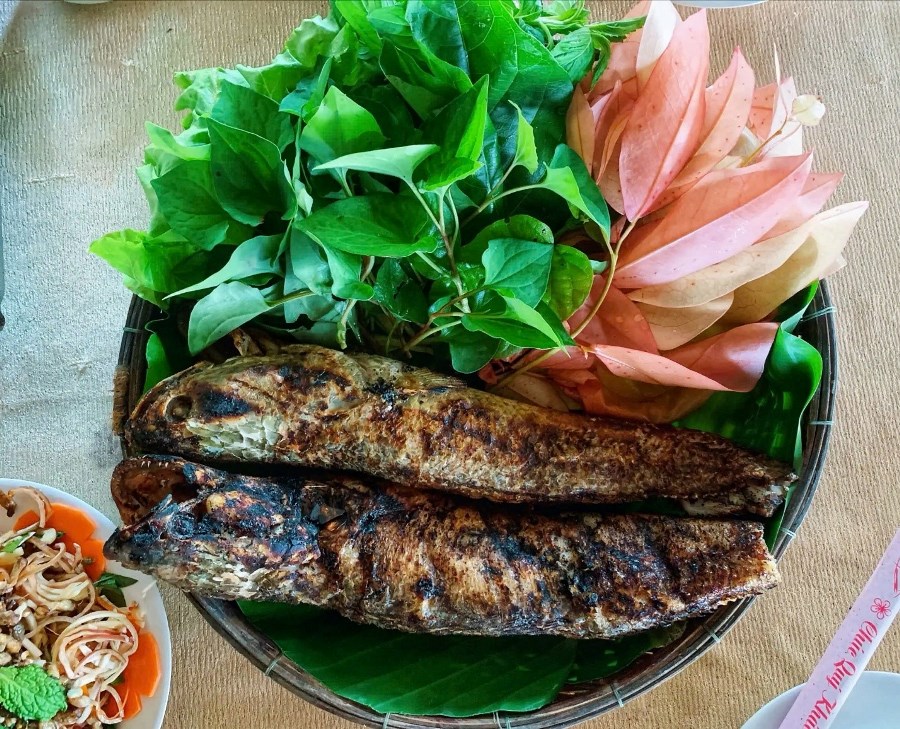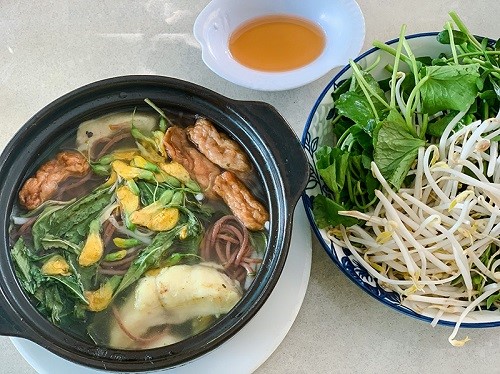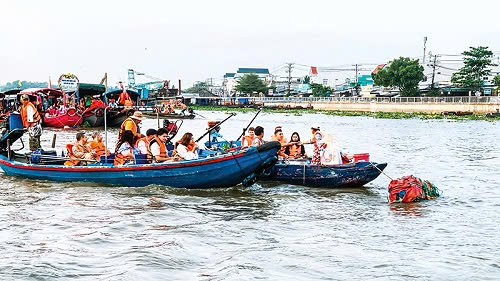
Current situation of the Cai Rang Floating Market and a new approach
The Cai Rang floating market in the Mekong Delta is a large market bustling with activity due to its connection to economic development and tourism. However, the market is at risk of disappearing due to various factors. One primary concern is the decreasing number of traders. Mr. Tieu Chi Nguyen, Vice Chairman of the People’s Committee of Le Binh Ward, Cai Rang District, stated, “Currently, the Cai Rang Floating Market only has about 200 trade boats, which is a significant decrease from before”.
Traders have gradually left the market due to several reasons. According to Ms. Tran Thi Phuong Thuy, owner of the Sac Mau Cho Noi floating raft, the development of road traffic has significantly affected the operation and transportation of goods by boat in terms of costs. Additionally, the completion of the embankment has dramatically impacted the trade of goods on both the shore and the river. In the past, it only took 2-3 workers to transport 7-8 tons of agricultural products, but now it takes 8-9 workers, and the goods must be transported a long distance from the boat to the warehouse.
Preserving the Cai Rang floating market has been the subject of numerous seminars and conferences. The Can Tho City People’s Committee approved and initiated the “Preserving and Developing Cai Rang Floating Market” project in 2016. The project aims to transform Cai Rang into a wholesale market and a hub for the Mekong Delta region’s agricultural products while promoting tourism, maintaining environmental hygiene, and addressing social security concerns. However, the project faced several challenges when it overlooked the essential elements that require preservation: the Cai Rang floating market culture and the role of traders.
The Cai Rang floating market space is divided into three areas. The main area, with its middle section, is the merchant’s living and trading space. Here, the main activities include buying and selling agricultural products and wholesale. This area represents the essence of floating market culture, where visitors will see the bamboo poles (a form of advertising products by hanging them on bamboo poles) and the locals’ typical selling and buying methods.
The area at the beginning of the market is dedicated to merchants who have adapted to tourism. Most of them operate pineapple boats that are decorated and tailored for tourists to experience.
At the end of the market, there are small traders and services for food and drink and opportunities to visit craft villages. By understanding the structure of the floating market, one can see that there are specific directions to preserve and promote the heritage associated with practical tourism.
In line with this, Can Tho is aiming to develop a Project to preserve and promote the value of the national intangible cultural heritage of Cai Rang Floating Market Culture to serve tourism development until 2030, with a vision to 2045 (tentative name).
Join hands to find solutions to promote heritage and tourism
Culture, environment, and economy play a crucial role in determining the preservation and promotion of the cultural heritage value of the Cai Rang floating market in connection with tourism development. A United Nations World Tourism Organization (UNWTO) report emphasizes the unique symbiotic relationship between culture and tourism. Culture is considered a valuable resource for tourism development, while tourism provides an effective means to capitalize on the economic value of culture. According to Mr. Tieu Chi Nguyen, Vice Chairman of the People’s Committee of Le Binh Ward, preserving the merchants is essential for protecting the floating market. As a result, specific policy mechanisms for the Cai Rang floating market are proposed, along with the development of suitable and distinctive tourism products to encourage tourists to spend more time exploring and experiencing the floating market.
Many experts, travel agencies, and tourism businesses have suggested that the Cai Rang floating market should also be developed for tourism and conservation. Ms. Nguyen Thi Ngoc Suong, General Director of Hai Au Can Tho Restaurant, Hotel, and Tourism Company Limited, said, “The culture of the Cai Rang floating market can only be preserved if the market itself exists, so tourism should be considered as a way to create more opportunities for the people at the floating market. Preserving the culture of the Cai Rang floating market requires the joint efforts of many parties, focusing on the current market’s characteristics. The main factors are the agricultural economy and tourism. Therefore, we have two approaches to preserving the heritage of the Cai Rang floating market. One is to preserve it; the other is to adapt to the market by utilizing indigenous cultural elements to create products suitable for each customer group”. Ms. Tran Thi Phuong Thuy, owner of Sac Mau Cho Noi floating raft, shares the same opinion: “We should focus on preserving and investing in the original part of the floating market”.
Additionally, there should be space for tourism development, possibly through a night market model on the river. According to Ms. Phuong Thuy, this night market model can be invested in and managed by the local authorities (consisting of about 20-30 wooden boats) for people to rent, register products and services, or call for investment. This will create a noteworthy product to attract tourists.”
Tourists travel to experience local communities’ lifestyles, daily activities, and customs at their destination. Therefore, creating a tourism space where tourists can engage with the local community, participate in the interaction process, and experience life as if they were part of the floating market community is important. This is essential and should be considered when developing tourism products for the Cai Rang floating market.
Preserving the Cai Rang floating market is a collective responsibility that requires the involvement of every stakeholder. The Department of Culture, Sports, and Tourism is responsible for managing the cultural heritage, the Department of Industry and Trade oversees market management, and the People’s Committee of Cai Rang district handles administrative management. These three focal units collaborate with relevant departments and branches to gather suggestions and provide recommendations to the People’s Committee. The goal is to identify appropriate strategies for preserving and promoting the cultural heritage of the Cai Rang floating market while integrating tourism activities.
Dao Thi Thanh Thuy, Deputy Director of the Department of Culture, Sports, and Tourism of Can Tho City, mentioned that they have designed a Special Tourism Products project focusing on the Cai Rang floating market. Simultaneously, they evaluate previous efforts and identify any pending tasks in the project for Preserving and Developing the Cai Rang Floating Market to address the market’s current situation. Furthermore, the Department has conducted various surveys to gather feedback and suggestions from localities and entities within the floating market, which will be compiled into a formal proposal for submission to Can Tho City People’s Committee.
It is essential to approach tourism that involves cultural heritage with caution, as cultural heritage is sensitive and easily damaged. The inclusion of cultural heritage in tourism should consider its material and spiritual values and its past, present, and future impact. For example, the Cai Rang floating market has unique characteristics that significantly impact the river community.
Source: Tourismcantho.vn - Translated by Hoang Dat







